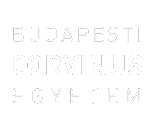Hublart, Pauline (2021) A Digital Revolution : The Customer Experience of Hermès in France. BA/BSc szakdolgozat, BCE, International Study Programs. Szabadon elérhető változat / Unrestricted version: http://publikaciok.lib.uni-corvinus.hu/publikus/szd/Hublart_Pauline.pdf
|
PDF
- Requires a PDF viewer such as GSview, Xpdf or Adobe Acrobat Reader
3MB |
Szabadon elérhető változat: http://publikaciok.lib.uni-corvinus.hu/publikus/szd/Hublart_Pauline.pdf
Absztrakt (kivonat)
Attracted by the luxury industry, I had the desire to discover this sector and I had the opportunity to do an internship as Cost Driver Analyst at Hermès, in Paris, France. Hermès is one of the main players in the luxury goods industry in France and worldwide. The luxury market is in constant evolution and a new wave is showing its face, Generation Z, born in the last two decades, which currently represents a small part of the market. This new class of more demanding and on-the-go consumers makes it more difficult for companies to predict purchasing behaviors. Thus, the luxury industry has every interest in preparing itself to face these future consumers, by knowing more about their behaviors and values. In this way, the aim of this research is to analyze the different factors that will shape the digitalization of the customer experience of Hermès in order to attract them. This research is structured as follow. Firstly, the theoretical background presents all important concepts and models that will be used in the practical part covering the process of building the customer experience, how customers decisions are driven, the characteristics of Generation Z and the digital marketing strategies. Secondly, the research methodology is presented and the use qualitative research as well as quantitative research are explained. Then, the main results are highlighted and discussed. The research concludes with the final remarks, as well as limitations and future research directions. Concerning the methodology, this research followed a mixed method approach with an initial qualitative phase followed by a quantitative phase to test hypotheses. On the one hand, in the qualitative research strategy, semi-structured interviews were employed for primary data collection in order to examine how Hermès’ customer experience Managers are investigating the future of the customer experience as well as its digitalization to satisfy the new needs of Generation Z. On the other hand, in the quantitative research strategy, an online questionnaire was conducted to collect information from potential customers by understanding their values and behavior in order to help predicting the future of the customer experience of Hermès to attract the Generation Z and make changes accordingly. As a result, the growth of young luxury consumers, in particular Generation Z, means that luxury brands steeped in tradition now face the daunting task of developing innovative and forward-looking strategies to stay relevant to this increasingly volatile industry. This generation scares Hermès and numerous digitalized and non-digitalized efforts have already been made by the luxury house to propose a better customer experience. However, improvements can be made to better meet the needs of Generation Z. Customers from Generation Z are used to purchase products online, but when it comes to luxury, they prefer to go to a store. However, before entering a store, they consult the social networks. Thus, the digital marketing communication must be consistent and handled with care. Moreover, Gen Zers appreciate authenticity and sincerity of the salesperson. In this way, digital web apps available in the “H.Pad” of the salesperson could provide more information on the customers. However, the strong craze for secondhand could turn some young customers away from physical stores. Thus, Hermès should develop a new digital channel for this specific market. In addition, “phygital” has become a must in the point of sale, but the balance between digital and physical must be carefully analyzed. Furthermore, Generation Z wants an immersive booth that will stimulate their five senses. This could be done thanks to new devices imitating odors and sounds and stimulating the sight. Moreover, these young customers prefer to share photos of the place and of themselves if they are in an attractive and photogenic environment. This will be a real advertisement for Hermès which should adapt some places in its stores and give some space for this on social networks. Also, Generation Z expects the store to have essential omnichannel services. Finally, this generation is also looking for the CSR discourse of the brand during the customer journey. To conclude, the objective for Hermès is to succeed by maintaining its appeal among younger generations and harnessing the opportunities offered by digitalization. This new retail strategy will have to revolve around three axes: a new customer relationship and a new selling ceremony, the development of new personalized phygital contact points with a high emotional value, and the integration of CSR policy.
| Tétel típus: | BA/BSc szakdolgozat |
|---|---|
| Témakör: | Marketing |
| Azonosító kód: | 14008 |
| Képzés/szak: | Business Administration and Management |
| Elhelyezés dátuma: | 13 Okt 2021 11:16 |
| Utolsó változtatás: | 02 Dec 2021 08:49 |
Csak a repozitórium munkatársainak: tétel módosító lap

